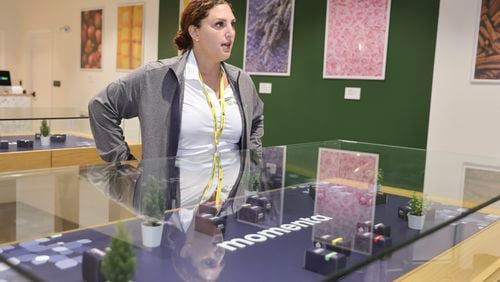The four beluga whales at the Georgia Aquarium easily capture the imagination of visitors, with their powerful, ivory-colored bodies and expressive, upturned grins.
But some activist groups are not smiling at the aquarium’s plan to import an additional 18 wild belugas caught in Russian waters. Animal rights supporters, including People for the Ethical Treatment of Animals and the Humane Society of the United States, have mobilized followers around the world to fight the importation, which would mark the first time in almost 20 years that wild-caught belugas have been brought into the country for display.
Aquarium personnel contend that the new cohort of belugas will bolster the genetic diversity of the captive population in the U.S., making that group sustainable for the next 75 years. While the belugas are stars at the aquarium, they also promote understanding and conservation of the species, officials say.
But Lori Marino, a neuroscientist at Emory University who has studied belugas and other cetaceans, said it’s wrong to keep these animals in tanks. The request promotes “husbandry,” not conservation, she said, and “shows these mammals can’t thrive in captivity. The answer is not to keep replenishing them as they die, but to think whether captivity is a place where they should live.”
The Georgia Aquarium’s application for the import permit was made on behalf of a group of marine parks, including the Shedd Aquarium in Chicago, Mystic Aquarium in Connecticut and three SeaWorld parks. The animals would be owned by the Georgia Aquarium, but distributed among the six facilities, to better match up breeding adults. During a recent 60-day period when the National Marine Fisheries Service accepted public input, more than 9,000 comments were entered, most of them negative.
Among the commenters was Courtney Vail, spokesperson for Whale and Dolphin Conservation, an international organization with 80,000 followers.
“The premise of this permit is conservation and education,” Vail said recently in an interview with The Atlanta Journal-Constitution. “If you want to pick apart the conservation argument and unveil the truth, the permit will fuel international trade in belugas. More will be captured, more will be transported thousands of miles, to sometimes substandard facilities.”
But William Hurley, chief zoological officer and senior vice president at the Georgia Aquarium, said in an interview that the aquarium has taken rigorous and costly measures to insure that the importation would not threaten the Okhotsk Sea population and called the idea that the importation would stimulate international trade untrue.
“The Georgia Aquarium knew that Russia had been practicing this (wild capture) for decades,” he said, “and knew they would continue, by providing animals to Asian countries,” whether the U.S. became a customer or not.
As to whether belugas should be on display at aquariums and marine parks, the Marine Mammal Protection Act establishes that the display of belugas and other cetaceans can improve their welfare by educating the public about threats to the species, which can in turn promote conservation efforts.
Hurley added that research on captive animals is critical to determine how they will respond to increased environmental threats, as Arctic seas warm, polar ice disappears, shipping routes expand in once-frozen water and mineral exploration and pollutants disturb their habitats.
Belugas are intelligent, gregarious creatures who live in family units of 10 or so, but sometimes gather in much larger crowds. They migrate hundreds of miles in the summer. Opponents object to penning up such creatures in limited enclosures and separating them from their extended families.
With her written protest of the permit, Vail added a link to a YouTube video of Russians capturing Okhotsk belugas in 1999. Also included was an assessment of the tape from her colleague Mark Simmonds, director of science at Whale and Dolphin Conservation, describing the scene as the worst thing that could happen to the belugas “short of skewering them on a harpoon.”
Hurley rejects this assessment.
“I flew there myself and I watched their collection methodology,” he said. “It is the exact same process that (National Marine Fisheries Service) uses here,” when transporting cetaceans, or gathering them for tagging or blood tests.
The Marine Mammal Commission recommended that the permit be approved (with some conditions — in particular an assurance of safe transport from Russia to the U.S.) and noted that the Georgia Aquarium has provided significant support for satellite tagging, biopsies, aerial surveys and other methods of determining the health of the Okhotsk group, and other groups as well. Hurley estimated the aquarium has, over the last five years, already spent $2 million on the project.
“There’s opposition to just having marine mammals in human care in general,” said Brandon Southall, former director of the ocean acoustics program for the National Oceanic and Atmospheric Administration and a consultant on cetaceans at California-based SEA Inc. “It’s an emotional opinion.”
Despite claims to the contrary, belugas live longer in captivity, Southall said. Captive belugas help scientists test their sensitivity to undersea noise, a serious concern for cetaceans who navigate by echolocation and whose habitats are disturbed by underwater blasting and ship’s engines. That knowledge “only came from having animals in human care,” he said. “You can’t do these studies in the wild.”
The National Marine Fisheries Service will assess the permit application and render an answer by January, said Hurley.






